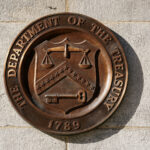
As regular readers know, I’ve been doing the Classroom Q&A column over at Education Week for thirteen years.
And I plan to continue doing it for quite a few more years.
I have so many contributors now, though, that there really isn’t space there for my annual thematic compilation posts, where I collect links to all the posts on particular topics.
So, I’m starting to do it here instead, and this is the sixteenth one.
Today’s theme is on Math Instruction:
Math Might Be a Universal Language. But Don’t Teach It That Way
Encouraging students to use their first language helps them make math connections, increasing their understanding and engagement.
Math Is Also a Foreign Language to English-Learners. How to Reach Them
As tough as math mastery can be for any student, learning it along with English calls for additional strategies. Try these nine.
‘Beware of Teaching Math Vocabulary Out of Context!’
Three educators share their favorite math instructional strategies, including “Turn & Talk to Your Neighbor.” Read more.
Four Teacher-Recommended Instructional Strategies for Math
Four teachers share their favorite strategies for math instruction, including the Concrete Representational Abstract approach. Read more.
Don’t ‘Make the Math Classroom a Project-Based-Learning-Free Zone’
Three educators share advice on incorporating project-based learning in math classes, including asking the question “What’s nearby?” Read more.
Using Project-Based Learning in Math Classes
Two teachers share practical strategies for using project-based learning in math classes, including one called “Notice & Wonder.” Read more.
Twelve Ways to Make Math More Culturally Responsive
Four educators share ideas for using culturally responsive teaching in math class, including by helping students make community connections. Read more.
* ‘I Am Doing My Best’: Teaching Math During the School Closure Crisis
Four teachers offer remote teaching tips for math instruction, including recognizing that nothing they do is going to be anywhere near “perfect.”
* ‘Less Is More’ in Math Distance Learning
Four math educators offer advice about remote instruction, including providing more specific targets and cultivating home connections.
* ‘How to Assess Students’ Math Skills Remotely
Two math educators discuss how they are communicating student performance during the school closure crisis, as well as how they are taking care of themselves.
* Math Instruction in the Age of the Coronavirus
Two math educators share how they design their remote teaching math lessons and what they typically look like in practice.
* Elements of an Effective Math Lesson
Teachers explain how creative math lessons can spring from students’ surrounding environments and culture such as the cost of the Thanksgiving meal and the search for “math selfies.”
* Eight Educators Share Their Best Math Lessons
Math educators share their favorite lessons, including taking students for a walk around a fenced-in field, investigating student-loan costs, and working alongside a language arts teacher.
* ‘Nix the Tricks’ in Math Instruction
A three-part series about the mistakes made in math instruction concludes with answers from Dr. Hilary Kreisberg, Richard Robinson, Rachael Gabriel, Tamera Musiowsky, Dr. Fuchang Liu, Bonnie Tripp, Bill Wilmot, and Bradley Witzel, Ph.D.
* ‘It’s Time to Slow Down and Smell the Mathematical Roses!’
Sunil Singh, Laney Sammons, Abby Shink, Cathy Seeley, and Shannon Jones share their ideas on the mistakes that math teachers make.
* Mistakes That Math Teachers Make
This three-part series on mistakes made in math instruction “kicks off” with responses from Bobson Wong, Elissa Scillieri, Ed.D., Beth Brady, and Beth Kobett, Ed.D.
* ‘Tech Does Not Replace Pedagogy—It Complements It’
Kristan Morales, Cathy Seeley, and Madeline Whitaker Good write about how to use tech effectively in math classes.
*Ways to Use Tech in Math Class
Bobson Wong, Elissa Scillieri, Jennifer Chang-Wathall, and Anne Jenks offer their recommendations on using tech in math classes.
* Students Must ‘Engage in Math Problem-Solving’ & Not Just ‘Follow Procedures’
Wendy Monroy, Jennifer Chang Wathall, Sunil Singh, and Dr. Matthew L. Beyranevand contribute their commentaries about the best instructional practices in secondary math classes.
* Best Practices for Teaching High School Math
David Wees, Jill Henry, Tammy L. Jones, Leslie A. Texas, and Anne Collins share their recommendations for best practices in teaching high school math.
* ‘Writing in Math Class Is a Win-Win for Students & Teachers’
Dr. Linda Dacey, Sandy Atkins, Andrea Clark, Mike Flynn, ReLeah Cossett Lent, and Shannon Jones share their ideas on how to incorporate writing into math instruction.
* Author Interview: ‘Motivated: Designing Math Classrooms Where Students Want to Join In’
IIana Horn answers a few questions about her book.
Cathy L. Seeley, Mary Mueller, Daniel R. Venables, Nancy Villalta, Erik M. Francis, and Rik Rowe discuss the challenges facing math teachers and the best ways to respond to them.
* ‘Challenges Are a Natural Part of Mathematics’
Makeda Brome, Pia Hansen, Linda Gojak, Marian Small, Kenneth Baum, and David Krulwich share their thoughts on the biggest challenges facing math teachers.
* Differentiating Algebra Instruction
Wendy Jennings, Yvelyne Germain-McCarthy, Billy Bender, Derek Cabrera, and Ed Thomas contribute their thoughts on differentiated algebra instruction.
* Effective Math Instructional Strategies—Part Two
Leslie Texas, Tammy Jones, and Denise Flick share their thoughts on math instruction, as do a number of readers.
* Ways to Teach Math Besides ‘Drill the Skill’
Anne Collins, Sue O’Connell, Alexandra Mattis, and José Luis Vilson share their thoughts and suggestions about teaching math in Part One of a two-part series.
* Several Ways to Become Better at Teaching Math
Math educators José Vilson, Shawn Cornally, and Dan Meyer contribute their responses.
* Several Ways to Become Better at Teaching Math—Part Two
Bob Peterson and Eric Gutstein offer an excerpt from their book, Rethinking Mathematics, and Gary Rubinstein contributes an excerpt from his book, Beyond Survival.
As regular readers know, I’ve been doing the Classroom Q&A column over at Education Week for thirteen years. And I plan to continue doing it for quite a few more years. I have so many contributors now, though, that there really isn’t space there for my annual thematic compilation posts, where I collect links Ed Week Teacher Larry Ferlazzo’s Websites of the Day…




